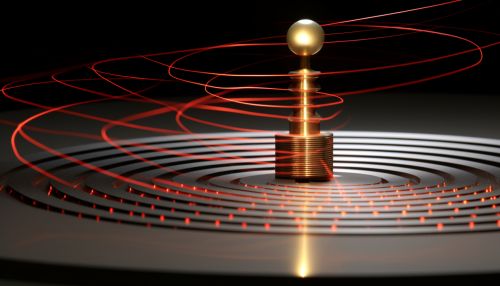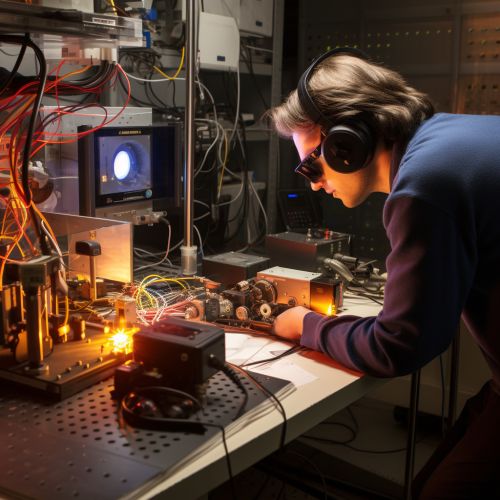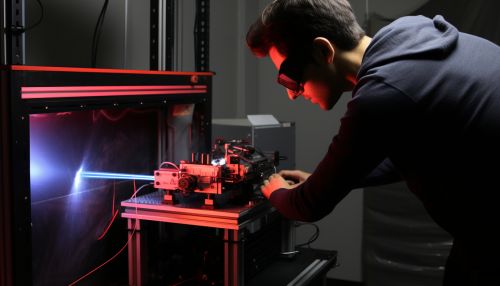Terahertz Technology in Imaging and Sensing
Introduction
Terahertz technology refers to the use of electromagnetic waves with frequencies in the terahertz (THz) range, typically defined as 0.1 to 10 THz. These frequencies lie in the far-infrared region of the electromagnetic spectrum, between microwaves and infrared light. Terahertz technology has gained significant attention in recent years due to its potential applications in a wide range of fields, including imaging and sensing. This article discusses the principles, techniques, and applications of terahertz technology in imaging and sensing.


Principles of Terahertz Technology
Terahertz waves are generated and detected using a variety of techniques, many of which are based on the principles of quantum mechanics and optics. Terahertz waves have unique properties that make them suitable for imaging and sensing applications. For example, they are non-ionizing and can penetrate a wide range of non-conducting materials, including clothing, paper, and plastic.
Generation of Terahertz Waves
Terahertz waves can be generated using several methods, including photoconductive antennas, optical rectification, and quantum cascade lasers. Photoconductive antennas use an ultrafast laser to excite carriers in a semiconductor, creating a transient current that emits terahertz radiation. Optical rectification, on the other hand, involves the use of a nonlinear optical crystal to convert an ultrafast laser pulse into a terahertz pulse. Quantum cascade lasers generate terahertz radiation through intersubband transitions in a semiconductor superlattice.
Detection of Terahertz Waves
The detection of terahertz waves is typically achieved using either time-domain or frequency-domain techniques. Time-domain spectroscopy involves measuring the electric field of a terahertz pulse as a function of time, while frequency-domain spectroscopy involves measuring the power spectrum of the terahertz radiation. Both methods require a detector that is sensitive to terahertz frequencies, such as a photoconductive antenna or a bolometer.
Terahertz Imaging
Terahertz imaging is a technique that uses terahertz radiation to create images of objects or scenes. It is similar in principle to x-ray imaging or ultrasound imaging, but uses terahertz waves instead of x-rays or sound waves. Terahertz imaging has several advantages over other imaging techniques, including the ability to penetrate non-conducting materials and the absence of ionizing radiation.


Techniques
There are several techniques for terahertz imaging, including time-domain imaging, frequency-domain imaging, and terahertz tomography. Time-domain imaging involves measuring the time delay of a terahertz pulse after it has passed through or reflected off an object, while frequency-domain imaging involves measuring the power spectrum of the terahertz radiation. Terahertz tomography is a more advanced technique that involves reconstructing a three-dimensional image of an object from a series of two-dimensional terahertz images.
Applications
Terahertz imaging has a wide range of applications, including non-destructive testing, security screening, and medical imaging. In non-destructive testing, it can be used to detect defects or anomalies in materials that are not visible to the naked eye. In security screening, it can be used to detect concealed weapons or explosives. In medical imaging, it has the potential to detect early stages of skin cancer or to image soft tissues in the body.
Terahertz Sensing
Terahertz sensing is a technique that uses terahertz radiation to detect or measure certain properties of a material or environment. It is based on the principle that different materials have different responses to terahertz radiation, which can be used to identify or characterize the material.
Techniques
There are several techniques for terahertz sensing, including terahertz spectroscopy and terahertz time-domain spectroscopy. Terahertz spectroscopy involves measuring the absorption or reflection spectrum of a material in the terahertz range, while terahertz time-domain spectroscopy involves measuring the electric field of a terahertz pulse after it has passed through a material.
Applications
Terahertz sensing has a wide range of applications, including material characterization, gas sensing, and biological sensing. In material characterization, it can be used to determine the composition or structure of a material. In gas sensing, it can be used to detect and identify gases based on their unique terahertz absorption spectra. In biological sensing, it has the potential to detect biomolecules or cells based on their terahertz response.
Future Perspectives
The field of terahertz technology is still in its early stages, and there are many challenges to be overcome before its full potential can be realized. However, the unique properties of terahertz waves, combined with advances in terahertz generation and detection techniques, make it a promising technology for a wide range of imaging and sensing applications.
